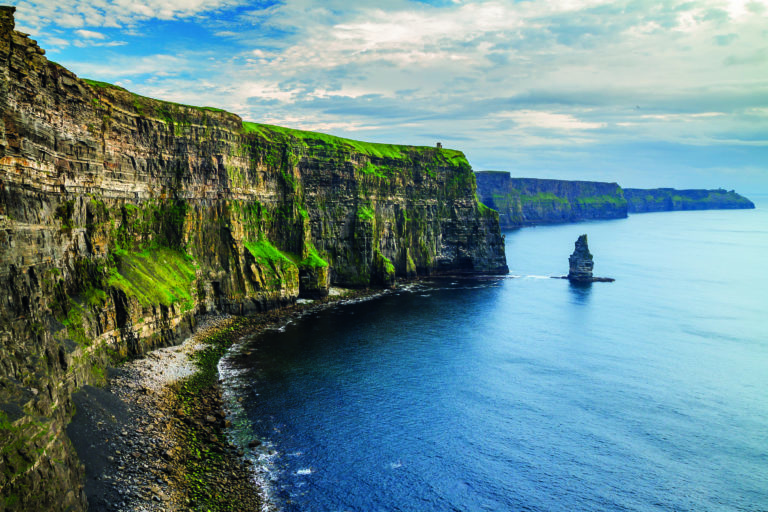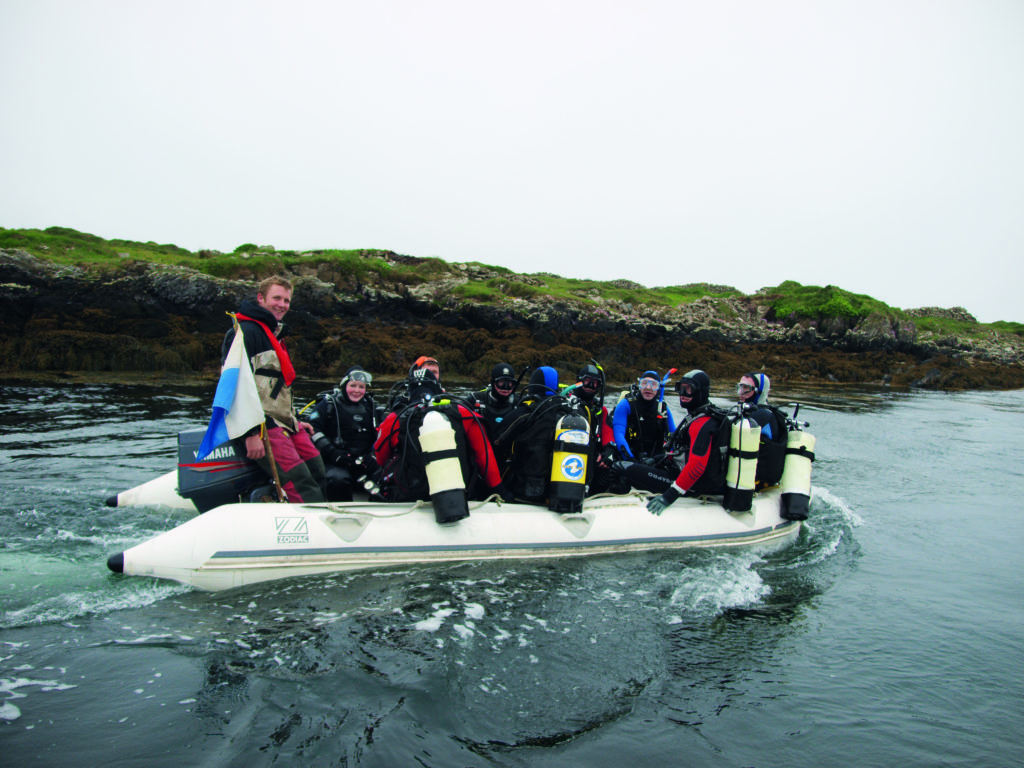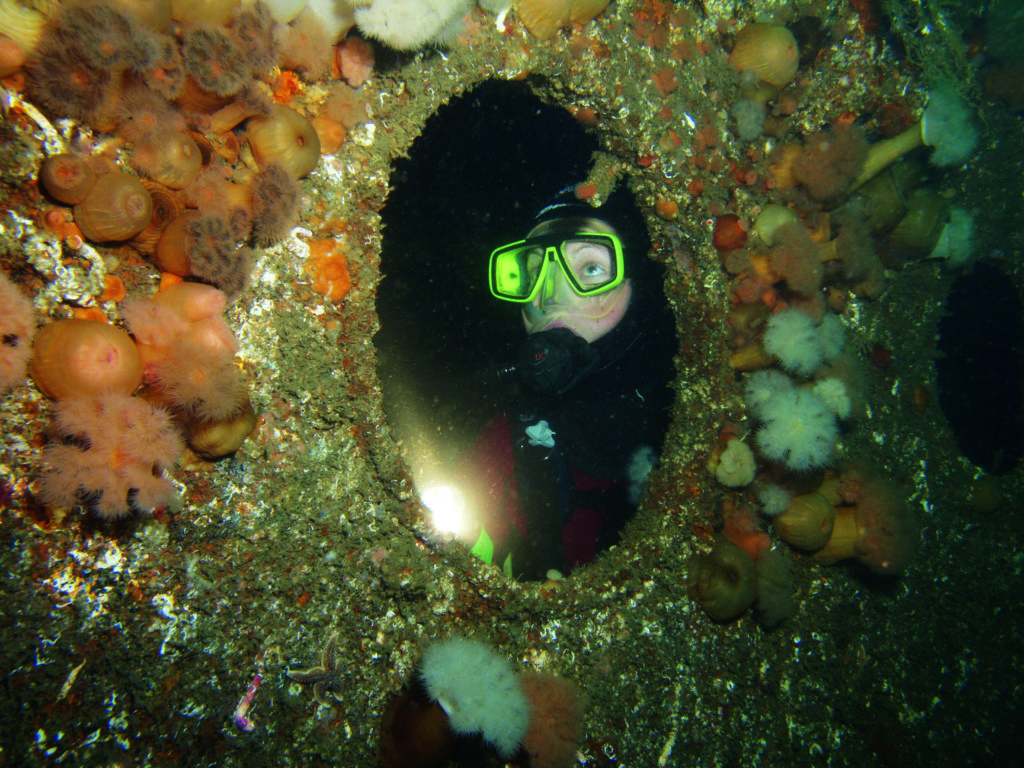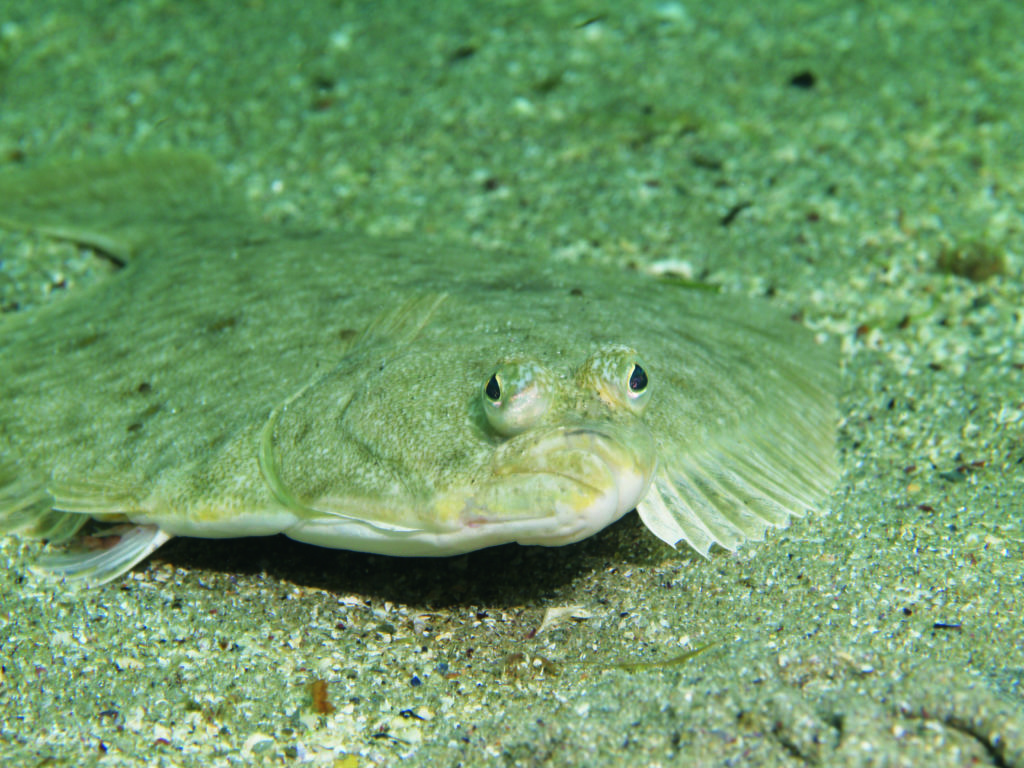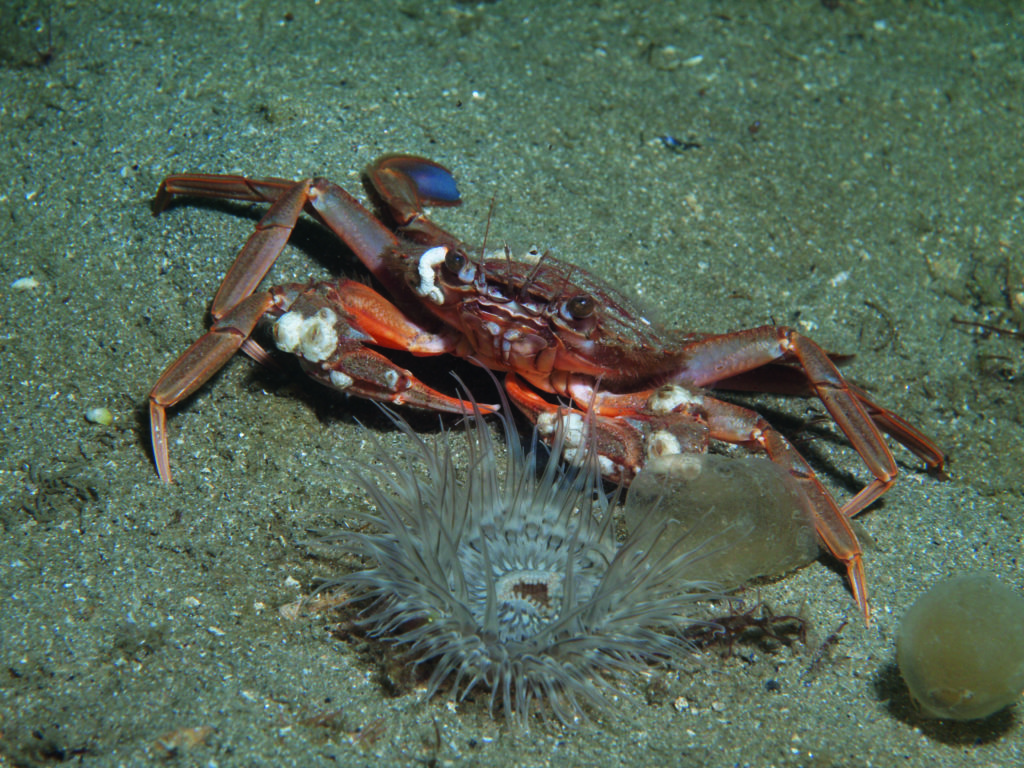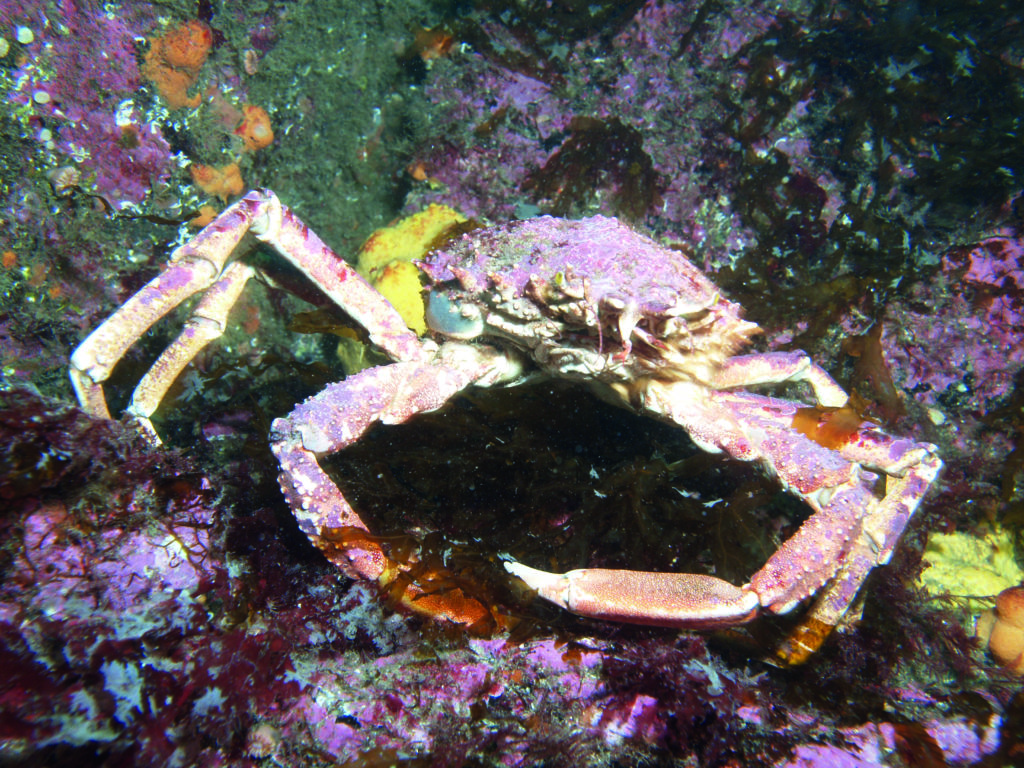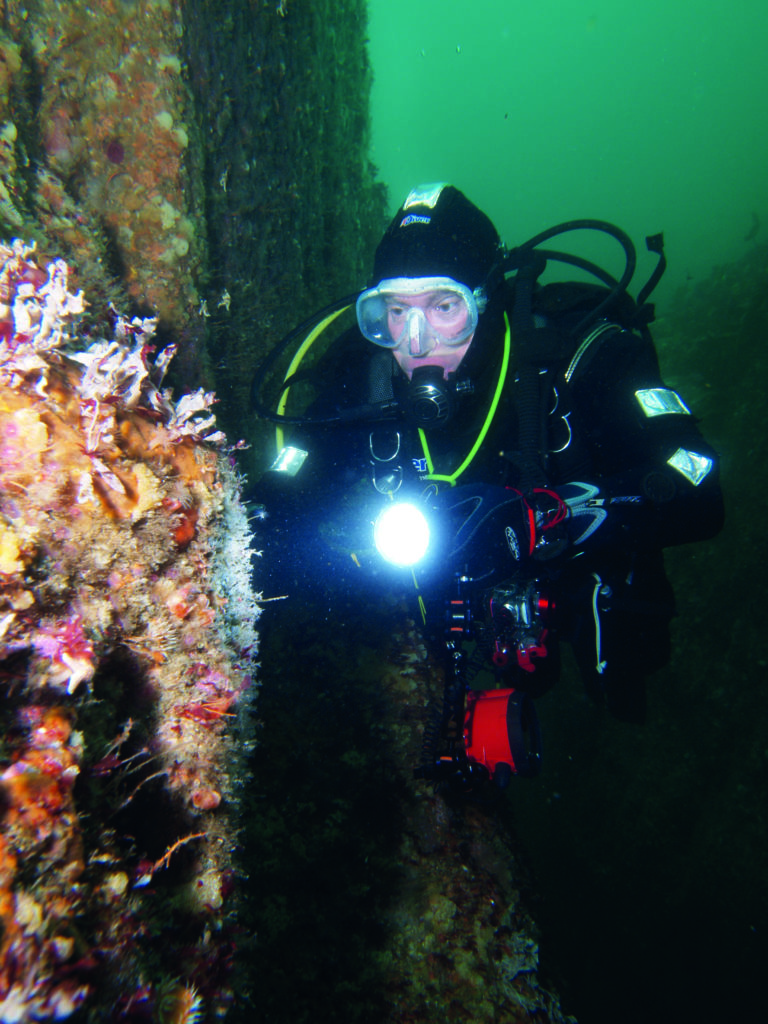The west coast of Ireland boasts phenomenal vis, myriad varieties of marine life and some of the best topside post-diving craic. MARK EVANS headed for the Emerald Isle
Ireland has a strong reputation among those in the know for its fantastic diving conditions, friendly dive-centres and, of course, unrivalled after-dive entertainment – that is, Guinness, great food, live music, banter a-plenty… oh, and did I mention the Guinness?
There are dive hotspots the length and breadth of western and southern Ireland, but I chose to base myself in the north-west, around Connemara.
There are a whole host of diving opportunities in this area, so you can either dip in on a long-weekend diving break, or quite easily fill a full week with undersea exploration – which is what I opted to do, travelling with my diving kit.
Underwater photographers, novice divers and veterans alike will be kept well-entertained on the house-reef of PADI 5* IDC dive-centre Scubadive West. Bursting with fish and invertebrates, not to mention every colour of seaweed you can imagine, the house-reef is often where newbies take their first steps into sea-diving, but it is so good that experienced divers too will find plenty to keep them occupied.
My buddy Paul Cushing and I were both armed with cameras, and spent our time working slowly along the barrier where the kelp-beds met the sandy bottom. Before we knew it, our computers were showing a dive time of 100 minutes – and our bladders were telling us to get out of the water!
Inshore dive-sites
Want to get slightly further afield? There are numerous inshore dive-sites that are accessed by Scubadive West’s rapid Marlin cataraman, including Inis Barna, which has gained fame as the Conger Dive, thanks to the proliferation of large eels at the site; 35m-plus sheer wall-dive Thanny Beag; and the Gaddys – two reefs diveable to 30m.
Wreckies have not been forgotten, and divers can visit the Julia T, a 30m supply vessel that sank while on its way to be decommissioned.
The wreck now sits bolt upright in 27m of water and is an extremely popular dive. Visibility is not the best because of its location – it sits in the middle of a vast silt bed – but because it is washed by currents, it is smothered in dead men’s fingers, plumose anemones and bright orange, white and yellow sponges, making it perfect for underwater photographers.
Wrasse and crustaceans make the wreck their home, including edible, spider and scorpion spider crabs, shrimp and squat lobster.
Limited penetration is possible at the bow and in the crew’s quarters but beware, the entire wreck is coated in fine silt, which can destroy visibility with one careless fin-kick. So watch what you‘re doing!
The offshore islands
Undoubted highlights of visiting this region are the offshore islands of Inis Turk, Inis Boffin and Clare Island. These small pockets of land are surrounded by spectacular dive-sites that benefit from excellent visibility and profuse coral and sponge growth.
Scubadive West can whisk you out for its two-day Island Dive Safaris on its twin-engined Lochan 38 charter-boat Sea Sprinter.
On my visit we dived at Inis Turk, and our first dive-site featured a large crevice that cut deep back into the sheer wall of the island then, under water, this vertical drop continued into a series of gullies before plummeting into the deep. The walls were smothered in plumose and dahlia anemones, dead men’s fingers, encrusting corals and cup corals in multiple colours.
The vis was in excess of 25m and light penetration was good even at 30m-plus, but turn your torch on and shine it along the walls and the true vibrant colours burst forth. Mind-blowing – it was just as vivid as dive-sites in the Indo-Pacific.
As well as the marine life covering the walls and seabed, there were also shoaling pollack, cod and bib overhead and, in and around the swirling kelp-beds, large, inquisitive wrasse. Edible and velvet swimming crabs could be found clinging to rocky outcrops or nestling in crevices, and lobster would wave their antennae from deep inside their lairs.
Dogfish lolled on the sand-patches, and the odd scallop would launch itself out of the silt and jet furiously away if you got too close. Look closer and you could find tiny cushionstars and various species of nudibranch.
The next site was in a tight bay, at the rear of which is a tunnel going a fair distance into the island. Large rocks blocked our passage at times, and we had to go over or under them, depending on how they lay. Again, visibility was outstanding, and the bright red encrusting growth on the cave-walls looked amazing.
Outside the cave, large kelp-beds sheltered all manner of marine life and, again, depths dropped off to beyond recreational diving limits.
Paul was left virtually speechless after his first two offshore Irish dives, but the excited chatter of the other divers on board – all veteran Ireland divers from the area – served to hammer home just how special the diving is around these tiny offshore islands. If you find yourself in this part of the world, believe me, you don’t want to miss a dive-trip out to Inis Boffin, Inis Turk and Clare Island.
Streamstown Drift
To round out our week of house reef, inshore and offshore diving, we signed on for one of Scubadive West’s signature dives – the Streamstown Drift. Streamstown Bay is a narrow inlet near Clifden, and the dive-centre plans the dives around spring tide dates.
Divers are dropped off from an inflatable near the mouth of the inlet, and then drift in on a filling tide, which gets exciting because the flow can reach speeds of five knots! It is so quick that you can “ride the tide” for 20-25 minutes, swim across current to the shore, get picked up by the inflatable and then go and do it all again!
Conclusion
The West Coast of Ireland boasts spectacular scenery, friendly locals and some of the best coldwater diving I have ever experienced. There are dives suitable for all levels of qualification, and enough variety between the offshore and inshore dive-sites to keep you busy for a month, never mind a week!
Throw things like the adrenaline-fuelled Streamstown Drift into the mix, never mind the nightly craic in any number of cosy hostelries, and you have all the ingredients needed for a fantastic week away.
There are various ways to get to Connemara. You can drive from wherever you are based in the UK, taking a ferry from Holyhead in Anglesey to get across the Irish Sea, but if you don’t fancy driving hundreds of miles, you can fly into Knock or Galway Airport and rent a car.
This cuts down on travelling time, but limits the amount of gear you can take. There are pros and cons to both options, so choose what suits you the best.
Scubadive West
Scubadive West is a PADI 5* IDC located right on the edge of the Killary Fjord in Connemara, Co Galway. Originally set up back in 1992 by Shane Gray, the busy centre is now run by his sons, Master Scuba Diver Trainer Breffni and Course Director Cillian. There is a sizeable rental stock, a compact shop, classrooms and changing-rooms, and a big car-park.
The centre is well-suited for training, with its own house-reef and Lochan 38 Sea Sprinter and cataramaran RIB Marlin. These two vessels allow the divers to access several inshore and 30-plus offshore dive-sites with ease, and with depths ranging from 5m-50m, there is something for all levels of diver.
Photographs by Mark Evans
Also on Divernet: Irish Shipwreck Shake-Up Gets Underway, Irish Divers Back New Wrecks Bill, Sunfish Stick Around Off Ireland
